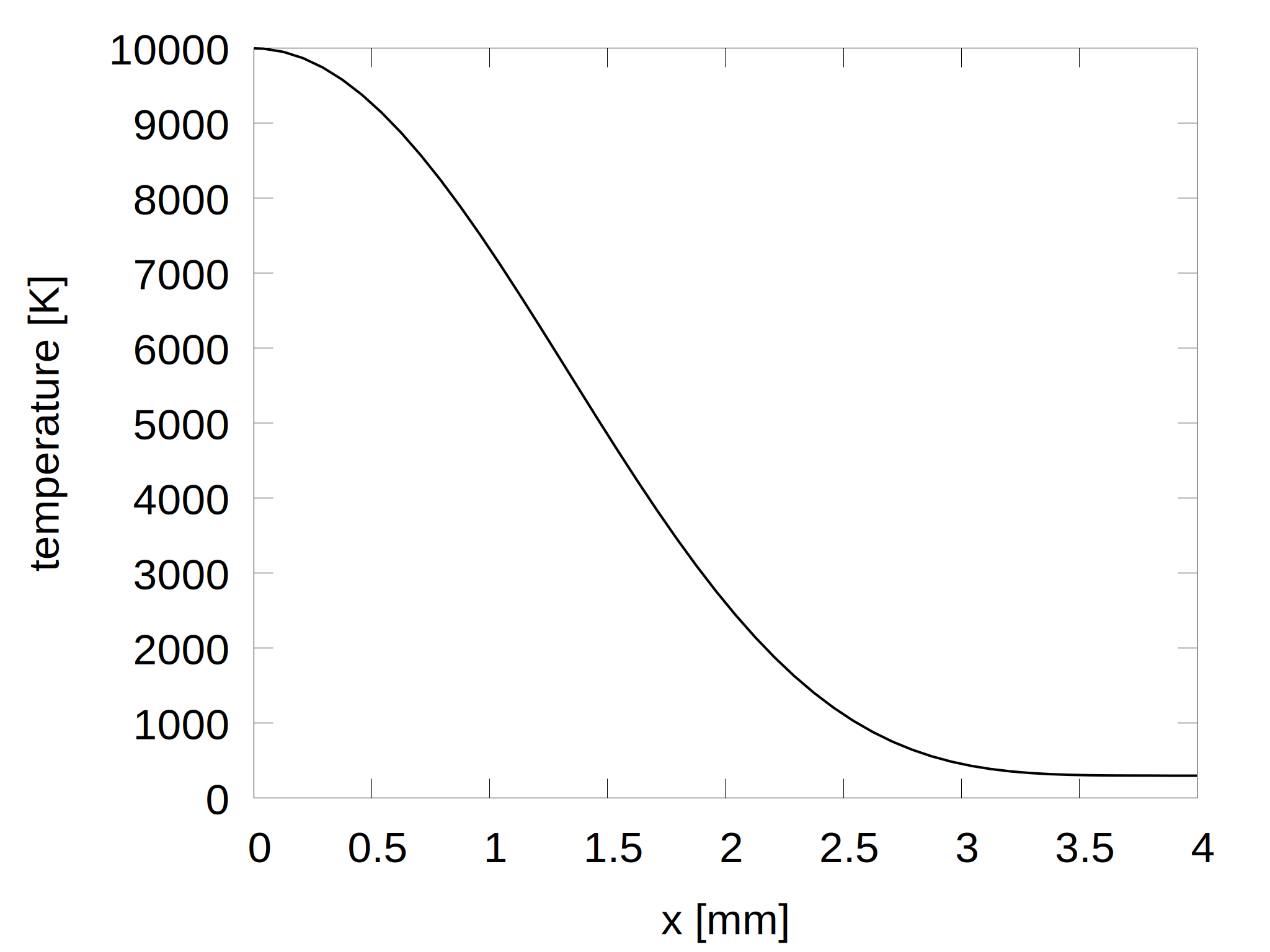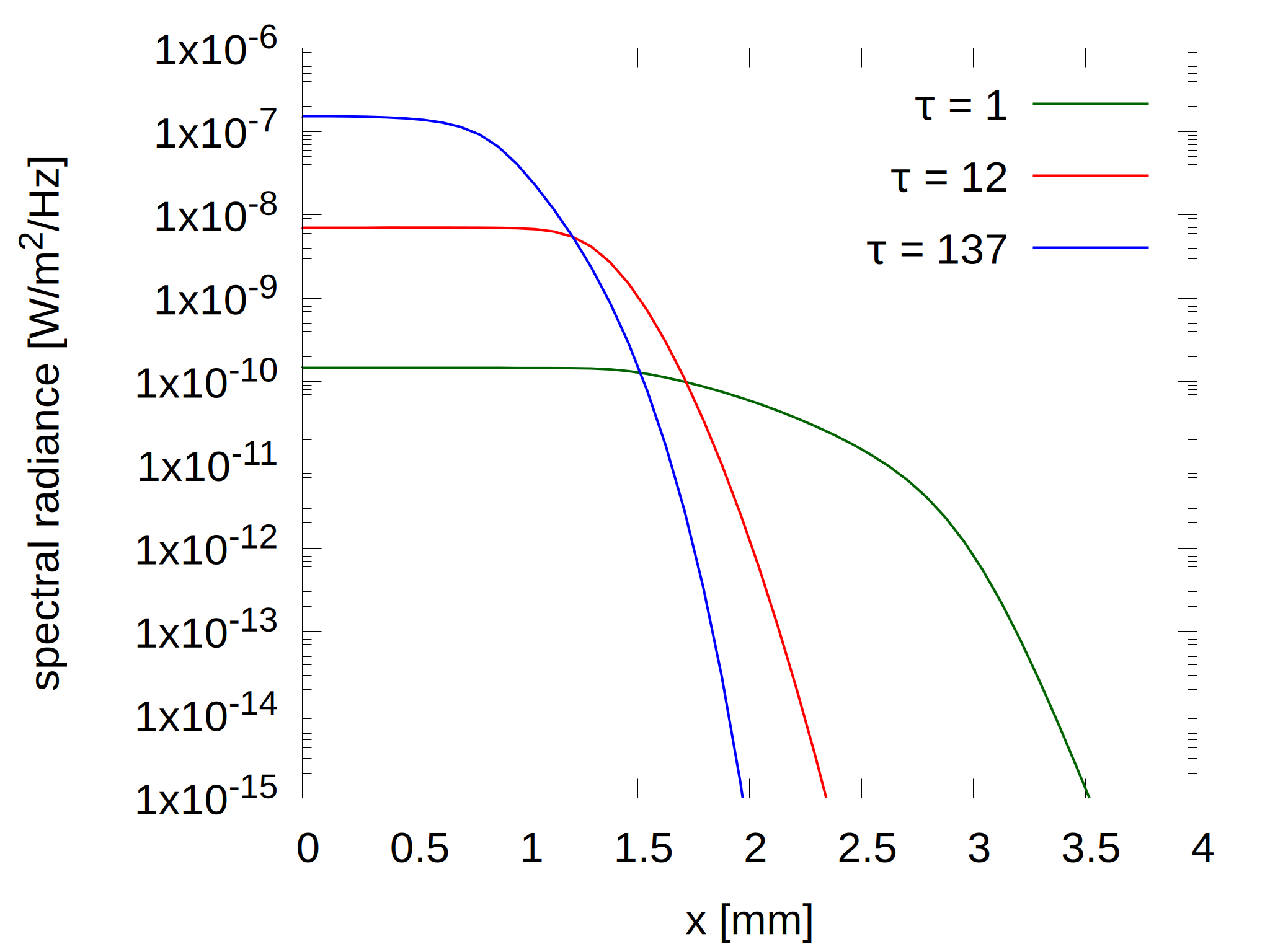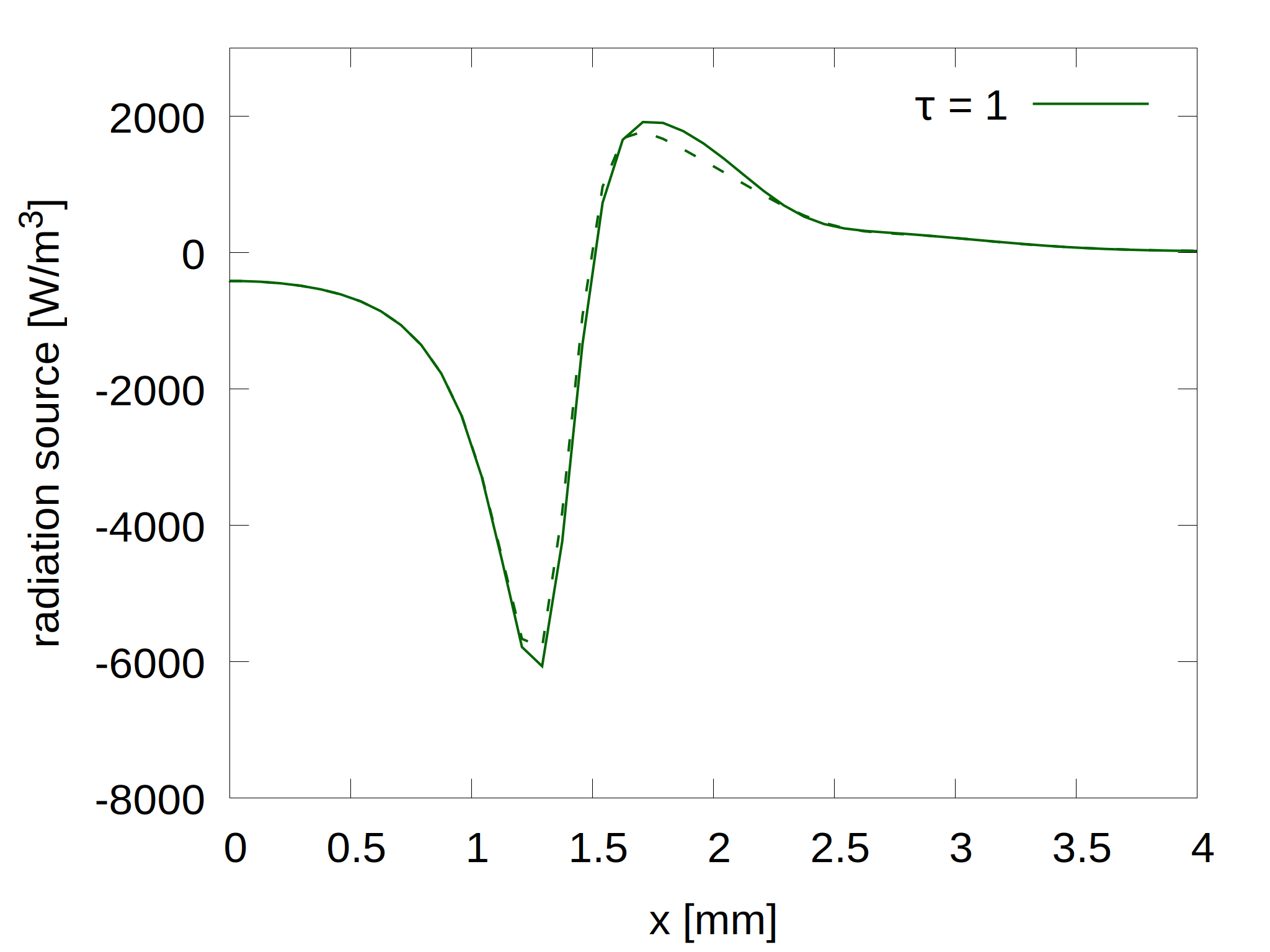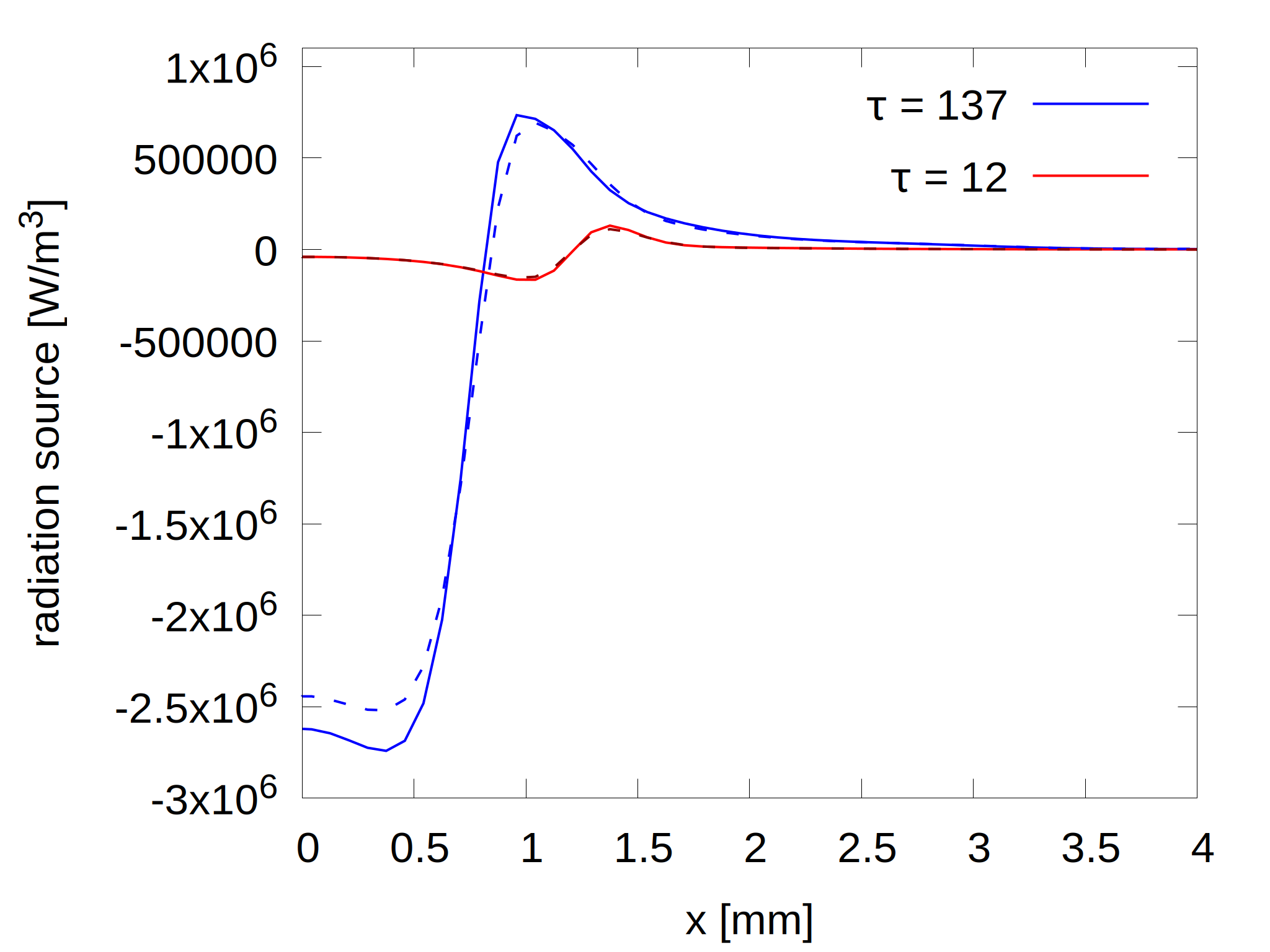P1 is an approximate method for including radiative energy transport in plasma simulations. The method is based on an expansion of the spectral radiance in terms of spherical harmonics. The series is truncated at the first term resulting to a diffusion type differential equation.
The P1 method performs quite well when directionality can be neglected. This is for example the case when the optical depth is high. This leads to frequent emission and absorption events that create a behavior similar to diffusion.
To demonstrate the performance of the P1 method compared to raytracing results, let us consider the following example: a plasma created in Fe vapor in a cylindrical vessel. For simplicity only a single Fe line at 193.45 nm, is considered. The temperature profile in this case is prescribed and has the form as shown below. The pressure is set to 100, 1000 and 10000 Pa resulting in optical depth \(\tau\) of 1, 12 and 137, respectively.
Figure 1 show the imposed temperature profile and Figure 2 the calculated spectral radiance as a function of the radius of the plasma.

Figure 1: Imposed radial temperature profile

Figure 2: Calculated spectral radiance
The results show that at lower optical depths (lower pressures) the spectral radiance is lower close to the center of the plasms. However, due to decreased absorption in the cold zone the radiation levels do not decrease as fast as for the higher optical depth values.


Figure 3: Calculated radiation source using the P1 methor (solid line) in comaprison with the raytracing method (dashed line) for different values of the optical depth \(\tau\).
Comparing the radiation source from the P1 method to the radiation source from ray tracing it is clear that the P1 method can closely follow the results for ray tracing for all three cases. This shows that the P1 method can offer a quick accurate estimate of the radiation source.